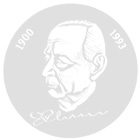Development of the digital cellular telephone system (GSM)
Thomas Haug
for his outstanding engagement in achieving an agreement upon and standardization of the GSM system within the CEPT/ETSI.
Heikki Huttunen
for fundamental innnovations and advanced deseign work, in particalr for contributions related to GSM handheld cellular telephones.
Dr. Dr.h.c. Jan Uddenfeldt
for fundamental innovations and design work, in paticular for contributions related to the GSM infrastructure.
The Digital Cellular Tlephone System (GSM)
Modern digital cellular telephony numbers among the most innovative and succesful telecommunications advances during this decade. Alsmost exclusively Europen in its developmental phase, its products form the basis of the fastest growing industry in the world today: Worldwide, the number of mobile telephones produced annually is today greater than the number of cars produced, and their use is increasing rapidly in most industrialized countries. In October 1996, the market penetration of mobile phones (digital and analoque) in raltion to the total number of inhabitants was 27,e% in Sweden, 27,6 % in Finnland, and 6% in Germany.
Typically, some 60% of such phones are digital (GSM), with the proportion og GSM rapidly on the rise. This growtn has been particulary strong in Germany, whre the number of digital GSM phones increased from 0,2% in 1994 to 6% in 1996. The prognosis is that in the year 2003 mobile phones may outnumber the fixed lines in Scandinavia, although the number of fxed lines per capita there is already the highest in world.
Ermerging Digital Cellular Telephony
The original impetus for a digital cellular telephone came in the early 1980’s with the recognition that it wold not be technically possble to sustain the increasingly widespread use of moble phones within the limitations of analogue technology. The first experiments ont the development of digital cellulear communication were carried out in Europe, early ones in 1983-84 with FDMA by Ericsson (S) and Telia (S), in 1983-84 with WB_TDMA by SEL (D), and in 1984-85 with NB-TDMA by Ericsson, Telia, Nokia (FIN), and Radiolinja (FIN).
The Technological Dispute
The Fisrt technical conference on “Digital Land Mobile Radiocommunication” (DMR) was recognized jointly by the Scandinavian Telecoms in Espoo, Finland, in February, 1985. Since then, these conferences have become an almost yearly event. The papers presented at the first conferences show clear profiles of the development work in progrss at the time. Initially the interest of the telecoms operators was predominant, but that of the telecoms equipment producers Nokia, Ericsson, and LCT (F) played the more decisive role from 1986 onwards. In the course to be based changed dramatically.
In DMr 85, the work on WB-TDMA (SEL) was discussed, but alternatives, notably digital FDMA, received considerable attention.
In DMR 86, the main interst of all parties was concentrated on NB-TDMA, and in early 1987 CEPT/ETSI adopted NB-TDMA with 200kHz channel spacing as the GSM access standard.
In 1989, Ericsson/Nothern Telecom conducted fleld trials in the U.S.A. which led to the adoption of 30kHz TDMA technology by TIA. Howerver the United States has not etablished a single national standard because of the competion between TDMA and CDMA there.
The Japanese Ministry of Telecommunications decided to adopt 25kHz TDMA technology as the national standard in 1989.
In the U.S.A. present developments seem to indicate a future competitive coexistence of NB-TDMA and NB-CDMA technology; the introduction of a unified standard appears unlikely.
Testing and Standardizing GSM
The technical controversy resulting from differences in then competing systems was primarly concentrated on the following issues:
aacess method (FDMA vs. TDMA)
bandwidth (narrow vs. wideband)
multipath propagatio ( dynamic equalization vs. diversity reception)
voice compression and coding principles
robustness of the system
All these variants were tested in the field trials organized by CNET from October 1986 to January 1987. The most important characteristics of the winning proposal were based on NB-TDMA, originally proposed indepently by Noia and Ericsson. The most critcal factor of the system the dynamic channel equalization scheme to control multipath progagation and other FM distortion effects, whose fundamental principles were developed by LCT ( Laboratoire Central de Télécommunication of France, which was later acquired by Matra). After standarddization work carried out by GSM (GRoupe Special Mobile) of ETSI, the system was aacepted as the European Standard in 1990.
Commercial Exploitation
The fisrt official GSM calls with mobile telehones were made in June 1990 in Helsinki using a Raiolinja (Nokia) network and handsets supplied by Nokia, in Ausgust 1990 in Stockholm using the Teli network with equipment from Ericsson. These networks were the full test use from 1991 to 1993.
The major contributors to the technical priciples ultimately accepted as standards are Ericsson (for their NB_TDMA infrastructure and personal cellular telephones), Nokia ( for their work on personal cellular telephones and on NB-TDMA infrastructure), and Swedish Telecom for its decisive role in the standarddization of the GSM system. The rest of the many principles and ideas included were contributed by numerous different operator, standardization authorities, universities, and corporations.
The Inventors of the GSM System
Clearly, no individual or group can claim the honor of being the sole cource of the multitude of breakthrough ideas comprising GSM. It is rather a question of relentless pursuit of a common goal by larger teams within a limited number of telecoms producer and telecoms operators remaining in full market competition, but agreeing to cooperate in etablishing common standards for the system to be introduced.
The Eduard Rhein Technology Prize has been granted to three key persons who led, coordinated, and orchestrated the quest which resulted in the present success of GSM.
These key indivial are
Jan Uddenfeldt von L.M. Ericsson
Heikki Huttunen von Nokia Mobil Phone Oy
Thomas Haug von CNET/ETSI.
Prof. Dr. Dr.h.c. Matti Otala, Tampare University of Technology
